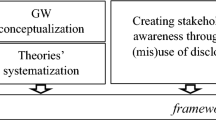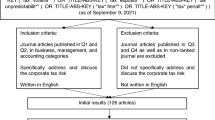Abstract
Various reformulations of the Coase theorem have developed normative corollaries on the choice of optimal remedies in the presence of positive transaction costs. In this article, we consider the extent to which these propositions are affected by the presence of asymmetric transaction costs, and we offer a reformulation of the Coase theorem which takes into account asymmetrical transaction costs. Our analysis combines several insights from the existing literature on property-type vesus liability-type remedies, identifying the conditions for the superiority of each type of remedy. Further, we consider the possible use of mixed remedies and identify the optimal scope of such solution.

Similar content being viewed by others
Notes
According to Coase (1960), absent transaction costs, the final allocation of scarce resources would be efficient, regardless of the initial assignment of rights and choice of remedial protection. The point was previously raised by Coase (1959) with reference to the optimal allocation of radio frequencies. For an intellectual history, see Kitch (1983), Parisi (2008), Cooter (1987), and Stigler (1966, 1988).
As discussed by Coase (1988), for purposes of the theorem, the notion of transactions costs should include not only bargaining costs associated with the negotiation and conclusion of the contract, but also all other strategic, monitoring and enforcement costs associated with the execution of the contract, including costs due to asymmetric information, adverse selection, free-riding, and hold-up strategies.
Calabresi (1968, pp. 72–73) said that the Coase theorem provides a valuable tool for delimiting the legitimate scope of public intervention.
For the present analysis we assume that litigation costs are entirely borne by the plaintiff, such that infringement will take place every time the initial allocation is inefficient, \( \bar{V} - \underset{\raise0.3em\hbox{$\smash{\scriptscriptstyle-}$}}{V} > 0. \)
Calabresi and Melamed (1972) showed that for the general case of positive transaction costs, strong remedies (property-type remedies) may impede efficient reallocations of rights. Likewise, inalienability rules foreclose value enhancing property arrangements because courts are unable to evaluate the subjective value of the parties. Therefore, weak remedies (liability-type remedies) emerge as the best alternative. However, as pointed out in the subsequent literature, strong remedies encourage owner-specific investments, thereby increasing the value of the entitlement for the current owner and producing a socially preferable result to weak remedies. For a review of this literature, see Parisi (2006).
When owner-specific investments are possible and when multiple-takings problems arise, the value of the current property allocation increases with the choice of strong remedies. Strong remedies, however, increase the expected costs of property reallocation.
These more flexible legal mechanisms can promote the reunification of the rights and privileges that are typically (and may have been formerly) held by only one owner. It is probably to prevent such perpetual fragmentation of property that the legal arrangements that tend to fragment the unity of property typically expire on their own or are subject to automatic reunification after a certain time passes or certain conditions are met.
Professors of property generally consider the the adoption of mixed remedies for real covenants a mere anomaly or coincidence. For instance, in the teachers' manual of a popular textbook on property, Dwyer and Menell (1998, p. 760) bring attention to this puzzling anomaly and observe that “because of one of the many historical accidents that plague property law, real covenants are enforced by a damages remedy only.” Parisi (2002) suggests that the fact that some property rights are protected differently than others may have a functional explanation.
References
Buchanan, J., & Yoon, Y. J. (2000). Symmetric tragedies: Commons and anticommons property. Journal of Law and Economics, 29, 1.
Calabresi, G. (1961). Some thoughts on risk distribution and the law of torts. Yale Law Journal, 70(4), 499–553.
Calabresi, G. (1968). Transaction costs, resource allocation and liability rules: A comment. Journal of Law and Economics, 11, 67–68.
Calabresi, G., & Melamed, A. D. (1972). Property rules, liability rules, and inalienability: One view of the Cathedral. Harvard Law Review, 85, 1089.
Coase, R. H. (1959). The federal communications commission. 2 Journal of Law & Economics, 1, 25.
Coase, R. H. (1960). The problem of social cost. 3 Journal of Law & Economics, 3.
Coase, R. H. (1988). The firm, the market, and the Law. Chicago: University of Chicago Press.
Cooter, R. D. (1987). Coase theorem. In J. Eatwell, M. Milgate, & P. Newman (Eds.), The new Palgrave dictionary of economics 457. London: Macmillian Press Ltd.
Demsetz, H. M. (1967). Toward a theory of property rights. American Economic Review, 57, 349.
Demsetz, H. M. (1972). When does the rule of liability matter? Journal of Legal Studies, 1(13), 20–25.
Dwyer, J. P., & Menell, P. S. (1998). Property law and policy: A comparative institutional perspective. Westbury, NY: The Foundation Press.
Epstein, R. A. (1993). Holdouts, externalities, and the single owner: One more salute to Ronald Coase. Journal of Law and Economics, 36, 553–582.
Heller, M. A. (1998). The tragedy of the anticommons: Property in the transistion from Marx to markets. Harvard Law Review, 111, 621.
Kaplow, L., & Shavell, S. (1996). Property rules versus liability rules: An economic analysis. Harvard Law Review, 109, 723–754.
Kitch, E. W. (1983). The fire of truth: A remembrance of law and economics at Chicago, 1932–1970. 26 Journal of Law and Economics, 163.
Marciano, A. (2010). Calabresi’s contribution to an “Economic analysis of law.” European Journal of Law and Economics.
Parisi, F. (1995). Private property and social costs. European Journal of Law and Economics, 2, 149–173.
Parisi, F. (2002). Entropy in property. American Journal of Comparative Law, 50, 595–632.
Parisi, F. (2006). Entropy and the Asymmetric Coase Theorem. In D. Porrini., & G. Ramello (Eds.), Property rights dynamics: A law and economics perspective (pp. 54–76). Routledge.
Parisi, F. (2008). “Coase theorem,” the new palgrave dictionary of economics. In S. N. Durlauf., & L. E. Blume (Eds.), New palgrave dictionary of economics (2nd ed.). London: Macmillian Press Ltd.
Parisi, F., & Depoorter, B. (2002). Fair use and copyright protection: A price theory explanation. International Review of Law and Economics, 21, 453–473.
Polinsky, A. M. (1989). An introduction to law and economics. Boston: Little, Brown and Company.
Schulz, N., Parisi, F., & Depoorter, B. (2002). Fragmentation in property: Towards a general model. Journal of Institutional and Theoretical Economics, 158, 594–613.
Stigler, G. J. (1966). The theory of price (3rd ed.). New York: Macmillian.
Stigler, G. J. (1988). Memoirs of an unregulated economist. New York: Basic Books.
Author information
Authors and Affiliations
Corresponding author
Rights and permissions
About this article
Cite this article
Luppi, B., Parisi, F. Toward an asymmetric Coase theorem. Eur J Law Econ 31, 111–122 (2011). https://doi.org/10.1007/s10657-010-9201-z
Published:
Issue Date:
DOI: https://doi.org/10.1007/s10657-010-9201-z




